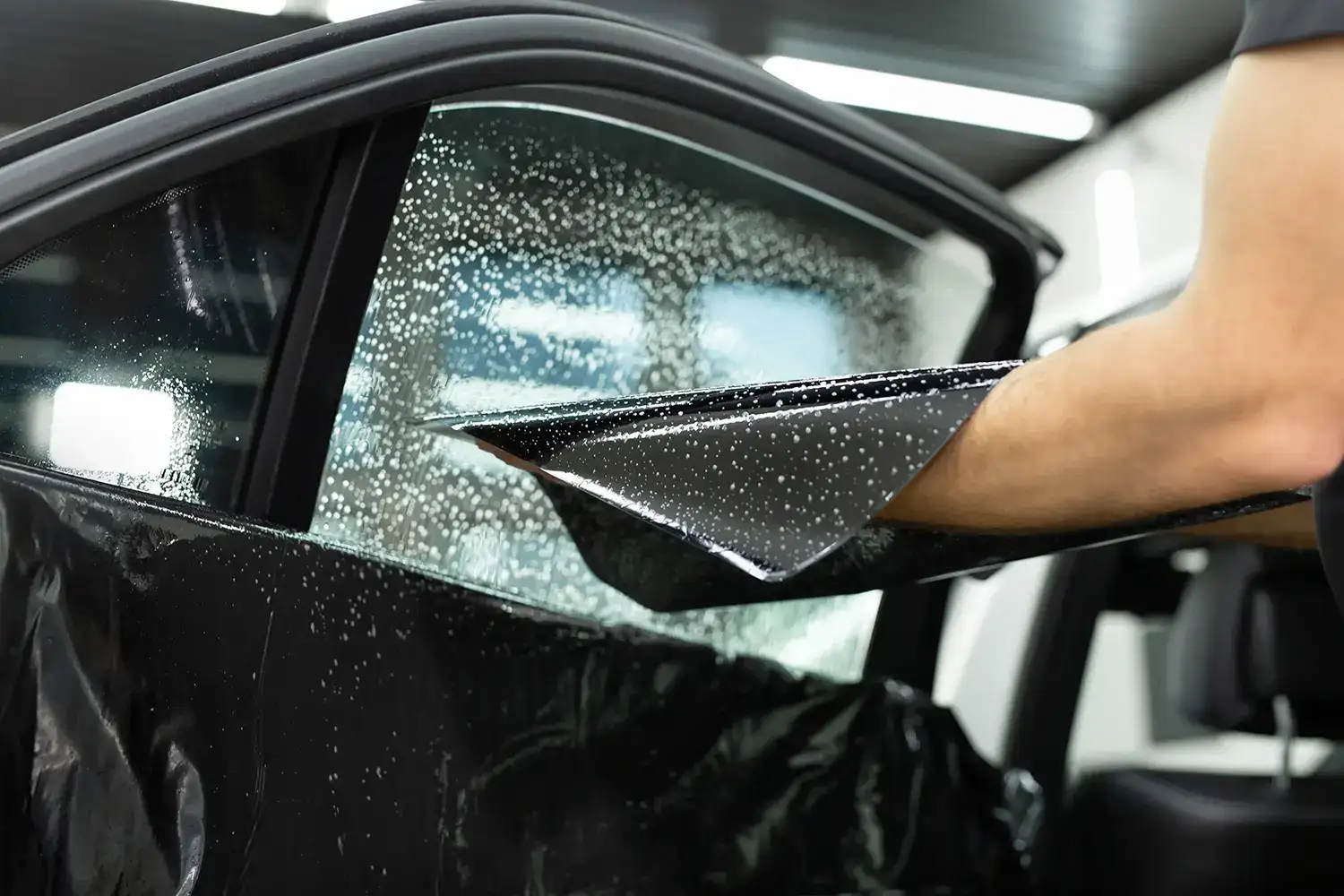The Process of Specialist Home Window Tinting Explained
Understanding the procedure of specialist window tinting needs a gratitude for the intricacies entailed in ensuring both aesthetic allure and functional quality. From choosing the right film type to the careful preparation of windows, each step plays a critical role in attaining a perfect application. Following these first prep work, the cautious cutting and application of the movie demand precision to avoid blemishes. The last assessment and assistance on upkeep continue to be vital for long-term fulfillment. What elements add to the total performance of the tinting process, and just how can they impact both aesthetics and efficiency?
Choosing the Right Window Film
Picking the right home window movie includes understanding various elements that influence both visual appeal and capability. The first consideration is the kind of film, which can range from dyed, metalized, to ceramic movies. Dyed films largely provide personal privacy and visual improvement, while metalized movies reflect heat and UV rays, enhancing power efficiency. Ceramic movies, although generally a lot more pricey, deal superior performance without compromising visibility.
Next, consider the movie's Visible Light Transmission (VLT) portion, which figures out just how much light goes into the area. A lower VLT supplies higher privacy and warm being rejected yet may decrease natural light substantially. In addition, the film's solar warmth gain coefficient (SHGC) is vital; a lower SHGC suggests better thermal efficiency, helping to keep interior convenience.

Preparing the Windows
Once the ideal home window movie has actually been chosen, the next action is extensively preparing the windows for setup. This preparation is essential for achieving optimum bond and making sure a flawless look post-installation.
The first task entails cleaning up the home windows thoroughly (window tinting). A premium glass cleanser is crucial, preferably one that is ammonia-free to stay clear of harmful any kind of home window seals or tint materials. Using a lint-free towel or paper towels, technicians need to get rid of any kind of dirt, dust, or oil, paying special interest to the sides and corners where debris often collects

Cutting the Movie
A precise technique to cutting the movie is important for ensuring an excellent fit on the prepared home windows. This step needs both skill and interest to information, as inaccuracies can lead to unattractive gaps or overlaps that compromise the visual and functional high qualities of the color.
Prior to cutting, the specialist need to gauge the window dimensions properly, making up any special forms or contours. It is recommended to utilize high-quality home window movie, as this material tends to be extra forgiving throughout the reducing procedure. The film is usually laid level on a tidy, smooth surface, and a sharp energy blade is employed to guarantee tidy sides.
To attain optimal outcomes, numerous experts use layouts created from previous installations or utilize software program to develop specific patterns. A common technique involves adding an extra margin to the design template, enabling for adjustments throughout the application stage.
Additionally, reducing the movie in a regulated setting decreases the danger of impurities influencing the glue side. By sticking to these thorough techniques, home window tinting specialists can make sure that the movie not just fits effortlessly however also executes properly in time, improving both appearance and performance.
Applying the Color
After diligently reducing the film to the right measurements, the following step involves using the color to the window surface. This procedure starts with ensuring that the home window is tidy and devoid of any type of dust, particles, or deposits that can affect attachment. A specific cleaning solution is commonly used, followed by thorough drying with a lint-free cloth.
As soon as the surface area is prepared, the installer will carefully place the color film versus the glass. It is vital to line up the film precisely to stay clear of misplacement, as any type of errors can cause an unprofessional appearance. To promote this, the installer may make use of a light mist of application remedy on the sticky side of the movie, enabling minor repositioning if needed.
Using a squeegee, the installer will certainly then start to press the film Recommended Site onto the glass, working from the facility outwards to remove air bubbles and guarantee a company bond. This technique is critical, as it assures a smooth and perfect finish. Throughout the application, interest to information is important to avoid creases or blemishes, making sure that the tint not just enhances appearances but likewise provides the desired performance.
Final Assessment and Treatment
The last evaluation is an essential step in the window tinting process, making certain that the installation satisfies both visual and useful standards. During this phase, experts carefully take a look at the mounted color for any imperfections, such as bubbles, creases, or misalignments. A thorough analysis additionally consists of examining the adherence of the movie to like it the glass, as well as its uniformity and overall appearance.
After the assessment, appropriate treatment and upkeep guidelines are given to the customer. It is important to inform them regarding the suggested timeline for cleaning up the tinted windows, usually encouraging a delay of a minimum of 1 month after setup to enable the sticky to treat completely. Clients should be educated on appropriate cleaning products and strategies, stressing the evasion of ammonia-based cleansers that can damage the tint.
Furthermore, experts ought to advise customers on the importance of normal upkeep to extend the life of the tint. This includes routine look for indications of wear or damage and reacting immediately to any type of problems. By making sure an extensive last inspection and supplying clear treatment standards, window tinting experts enhance consumer satisfaction and the long life of their work.
Conclusion
The professional home window tinting process includes numerous vital actions that ensure high-quality outcomes. Selecting the proper movie kind, preparing the home windows diligently, properly reducing the movie, and using it with precision are essential for accomplishing a remarkable finish.